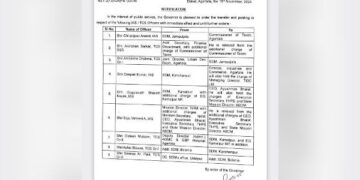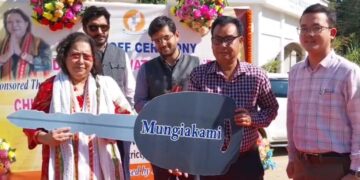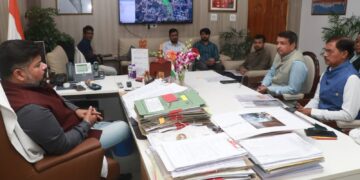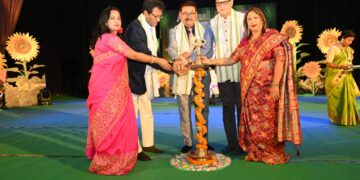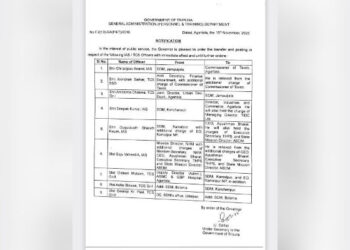Agartala, Nov 16: The Vaishnav Hindu Manipuri community of Tripura came together to celebrate the 226th Maha Raas festival with devotion and enthusiasm.
The annual event, which marks the love and divine bond between Lord Krishna and Radha was held from midnight on Friday, coinciding with the auspicious full moon night of “Kartik Purnima” in the Hindu calendar.
The Maha Raas festival, celebrated every year during the Hindu month of Kartik, is deeply rooted in the cultural heritage of Tripura’s Manipuri community.
This age-old tradition, which began more than two centuries ago, is centered around the Radha-Madhav temple in Agartala.
The celebration traces its origins to the late 18th century when Maharani Hariswari, the daughter of Manipur’s Maharaja Bhagya Chandra, brought the idol of Radha-Govind from Manipur to Tripura after her marriage to Maharaja Rajdhar Manikya II.
The festival features young girls dressed in traditional Manipuri attire, dancing gracefully around the idols of Radha and Krishna while others, portraying the role of Gopis, sing devotional songs throughout the night.
The celebrations are accompanied by the rhythmic beats of traditional drums (pung) and the melodious sounds of kartals (small metallic instruments), creating a spiritually uplifting atmosphere.
The roots of the Maha Raas festival in Tripura date back to 1798 AD, during the reign of Maharaja Rajdhar Manikya II.
According to local historian and temple priest Abhijeet Bhattacharjee, the festival was introduced when Maharaja Bhagya Chandra of Manipur, during a pilgrimage to Nabadwip, brought the idol of Radha-Krishna to Tripura.
The tradition of celebrating Maha Raas was initially confined to the royal palace but eventually expanded to the Radha-Madhav temple, which became a spiritual center for the Manipuri community.
Tripura and Manipur share a centuries-old cultural and traditional bond, strengthened through matrimonial alliances, particularly during the reign of Maharaja Krishna Chandra Manikya in the late 18th century. This bond facilitated the spread of the Bhakti cult in Tripura, integrating Manipuri traditions with the local culture.

